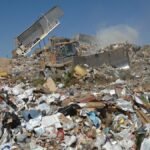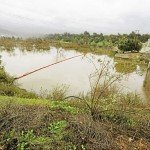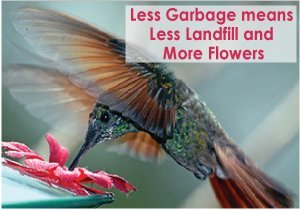
Dive Brief:
- The U.S. EPA says it will reevaluate its estimation methods for measuring carbon monoxide, volatile organic compounds and nitrogen oxides in MSW landfill emissions in an effort to settle a lawsuit brought by environmental groups in July 2022.
- The Environmental Integrity Project, the Sierra Club and the Chesapeake Climate Action Network said in the lawsuit that EPA hasn’t updated its landfill emission estimation methods since 1998. The Clean Air Act requires the agency to reevaluate them every three years.
- The EPA issued a proposed consent decree on Thursday, saying it would either suggest updated evaluation methods by Jan. 15, 2024, or determine that such updates aren’t needed. The EPA will solicit public comments on the consent decree until March 13.
Landfill operators and related companies are facing growing scrutiny around emissions testing, and some are investing in diverse methods for measuring emissions such as methane. Changes to how the EPA estimates such emissions might eventually affect some aspects of landfill management and operations.
The EPA agreed to look at how it estimates releases of some emissions in municipal solid waste landfills, according to the consent decree. If it determines updates are needed, the EPA agreed to submit a draft revision to the estimation methods, known as “emission factors,” in January 2024. The final rule is due by Aug. 14, 2024.
The Environmental Integrity Project and the other groups leading the lawsuit allege EPA has been undercounting carbon monoxide, VOCs and nitrogen oxide releases by as much as 25%. The EPA proposed an amendment to the estimation methods in 2008, but it did not finalize the amendment even though, the lawsuit states, the agency “expressly acknowledg[ed]” that the 1998 methods are “inaccurate in ways that tend to underestimate emissions.” The EPA has declined to comment on the consent decree or the lawsuit.
The EPA needs to update its methods to more accurately regulate landfills, better track how emissions are escaping and hold potential polluters accountable for greenhouse gas emissions, the environmental groups said.
“There’s been a significant change in what we know about landfill emissions the past several decades,” Jennifer Duggan, EIP’s deputy director, told Reuters.
The Solid Waste Association of North America plans to “participate in the EPA’s review of the emission factors,” said CEO David Biderman.
The consent decree and any possible updates to EPA estimation methods likely won’t affect landfill operators for a few years, but some operators have already had certain emissions monitoring methods on their mind.
These operators say they support finding more accurate emissions measurement strategies, which could show they emit less methane and other emissions than environmental groups think. Some are using satellites in an attempt to more precisely measure methane, for example.
Yet the variety of testing methods for certain emissions, plus the cost to carry out such testing, can complicate operations. Landfill operators are also under pressure from the Biden administration to adopt better measurement methods, as the administration’s climate strategy mentions landfills as a priority for reducing greenhouse gases.
The EPA consent decree comes about a year and a half after the agency issued a final rule setting methane emissions thresholds for MSW landfills, a decision that prompted some operators to make plans to update their emissions systems. That rule was long tied up in a separate lawsuit that was resolved in 2021.
From https://www.wastedive.com/news/epa-consent-decree-msw-landfill-emissions/642606/





 From
From 